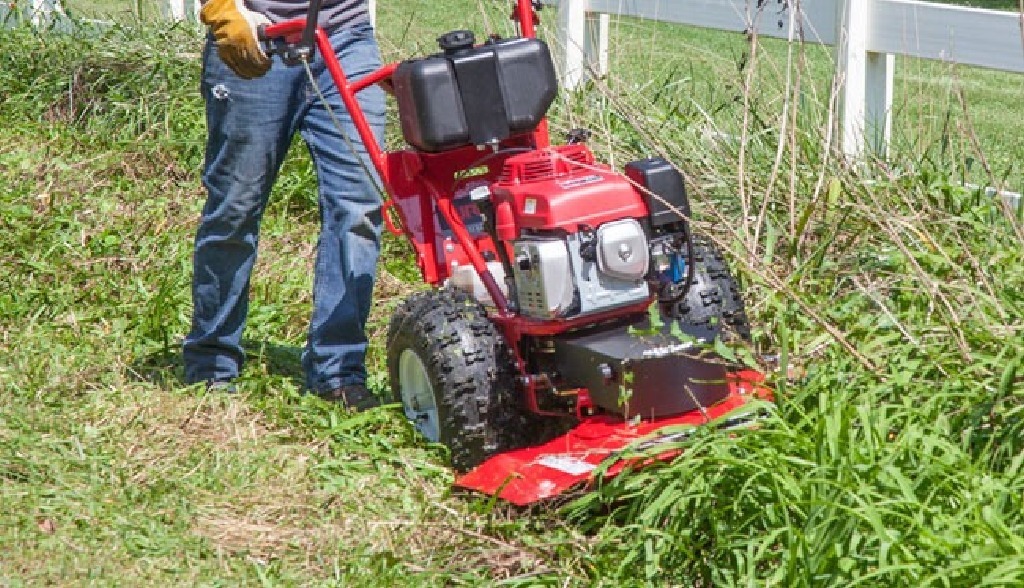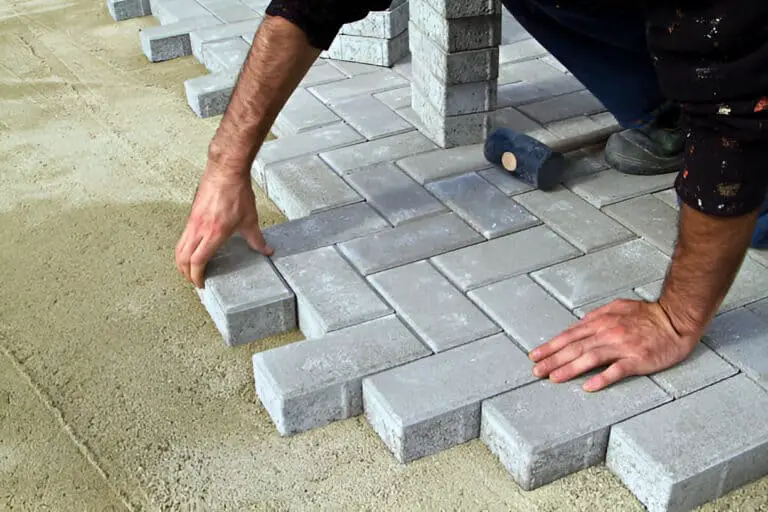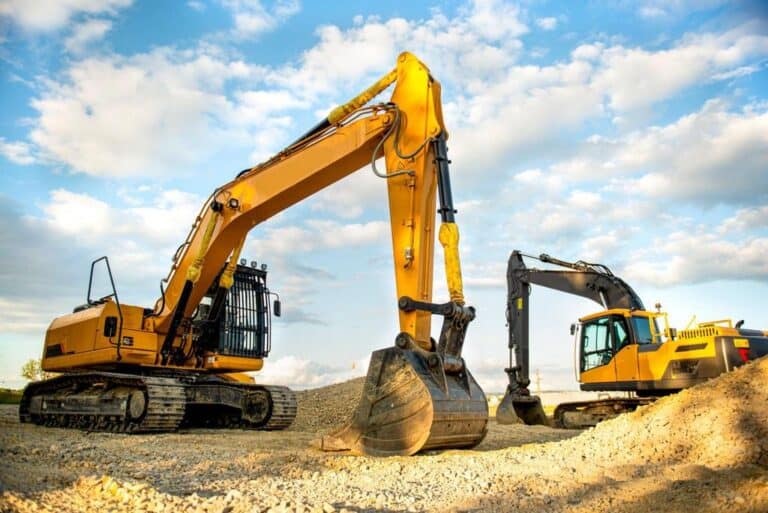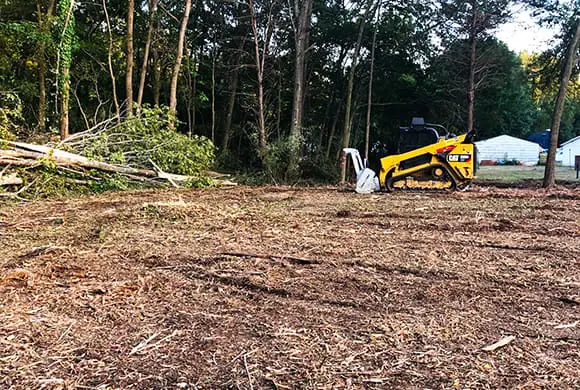The Benefits of Using Brush Cutters in Land Management Projects

Have you ever walked through a field or forest and noticed how thick and overgrown the vegetation can be? Are you tired of battling through dense vegetation when trying to maintain your land?
Look no further than brush cutters. These powerful machines are a must-have for any land management project, offering a range of benefits that make them a superior choice to other equipment.
Maintaining natural areas like these can be a challenge, but it’s essential to keep them healthy and safe for visitors.
In this blog post, we’ll talk about the benefits of using brush cutters, like how they can clear away thick undergrowth and how easy they are to use in land management projects.
Get ready to change the way you take care of your land, because with a brush cutter, the options are endless.
Introduction to Land Management and Brush Cutters
Land management is the process of making use of, protecting, and improving a piece of land’s resources. It includes a wide range of activities, such as managing wildlife, growing trees, and having fun.
A brush cutter is one of the tools and pieces of equipment used to keep the land in good shape. A brush cutter is a machine that is designed to clear dense vegetation and undergrowth from the land, making it easier to maintain and manage.
Brush cutters are commonly used in land management because they are efficient and can clear large areas quickly. They are also versatile and can be used in a variety of environments, such as forests, meadows, and hills.
These machines come in different sizes, designs, and power options, so it is essential to choose the appropriate one for the job.
Brush cutter safety should be the top priority when using the equipment. It is important to wear the proper protective gear, such as gloves, goggles, and ear protection, to prevent injuries. Operators should also know how to control the machine and be aware of potential dangers like uneven terrain, hidden obstacles, and flying debris.
The Working Principle of Brush Cutter
Brush cutters are powerful tools used to manage dense vegetation and overgrown areas of land.
They run on a two-stroke engine that uses a fuel mixture of oil and gasoline. The engine makes mechanical power, which is then sent to the final terminal or blade through a coupling mechanism, shaft tube, and gear box. This power moves the blade of the brush cutter, making it easy to cut through thick vegetation.
The brush cutter’s coupling mechanism is important because it connects the engine to the shaft tube. It is usually made up of a clutch, which connects and disconnects the engine’s power from the shaft tube, and a flywheel, which helps keep the engine’s momentum going while it is running.
The shaft tube is a long, thin tube that connects the coupling mechanism to the gearbox, which is responsible for transmitting the engine’s power to the blade.
The gearbox is a complex set of gears and bearings that moves the mechanical power from the engine to the blade. It is usually made up of a set of gears that are set up in a certain way so that they can turn the blade at high speeds. The gear box also slows down the speed of the engine’s rotation, which is important for cutting well.
The Benefits of Using Brush Cutters in Forestry Managements
First and foremost, brush cutters are incredibly versatile machines. They can be used in a variety of environments and handle a wide range of tasks. For example, they can be used to clear large areas of dense brush, small trees, and other vegetation quickly, which can be especially useful in areas where wildfires are a concern.
They can also be used to clear paths and trails, maintain roadsides, and even clear land for new construction or development. Also, brush cutters can be used to clear some areas while leaving others alone, which can be important for keeping habitats and promoting biodiversity.
Another advantage of using brush cutters in forestry management is their efficiency. Unlike manual labor, which can be slow and labor-intensive, brush cutters can clear large areas quickly and with minimal effort. This can save land managers time and money, allowing them to focus on other important aspects of forestry management.
One of the best things about using a brush cutter is that it can handle rough terrain and thick plants. Brush cutters can cut through thickets of woody vegetation and undergrowth with ease, making them ideal for clearing overgrown fields, trails, and fence lines. They are also very good at taking care of areas of land where weeds or invasive species have taken over.
Using brush cutters in forestry management can also improve safety. By cutting down small trees and brush, brush cutters lower the risk of wildfires and make it easier for first responders to get to trouble spots.
Brush cutters can also keep roadsides and trails in good shape to make them safer and easier for hikers, bikers, and other recreational users to use.
Comparison of the Advantages of Using Brush Cutters vs Other Land Management Equipment
When it comes to land management, there are several options for equipment that can be used to maintain the area. Three common pieces of equipment are brush cutters, mowers, and tractors.
Each of these machines has its own pros and cons, which can affect how well they work and how much they cost in different situations. In this section, we’ll compare the benefits of using mowers, tractors, and brush cutters for land management projects.
First, let’s talk about efficiency. Brush cutters are made to cut through thick vegetation and underbrush, which makes them very useful in places where this kind of plant life is common.
On the other hand, mowers and tractors are better suited for flat areas with grass and other light vegetation. This means that the efficiency of mowers and tractors is medium to high in these areas, while brush cutters are the best option for dense vegetation.
Next, let’s consider maneuverability. Brush cutters are easy to move around in tight spaces and on uneven ground because they are very flexible. This makes them ideal for land management projects that require precision cutting in areas that are difficult to access.
Mowers and tractors, on the other hand, aren’t as easy to move around and may have trouble getting to areas that need precise cutting.
Finally, we’ll take a look at the environmental impact. Brush cutters can be more environmentally friendly than mowers and tractors if used correctly. This is because brush cutters can target specific areas and vegetation types, which reduces the impact on non-targeted plants and animals.
However, all three machines can have a negative impact on the environment if not used properly, so it’s essential to consider the impact of the equipment being used and implement best practices for their use.
| Advantages | Brush Cutters | Mowers | Tractors |
| Efficiency | High | Medium | High |
| Maneuverability | High | Low | Low |
| Versatility | Low | High | High |
| Cost | Medium | High | High |
| Maintenance | High | Medium | High |
| Environmental | Medium | Low | Low |
Real-Life Examples of Successful Land Management Projects with Brush Cutters
Brush cutters have been used in many successful land management projects to improve the quality and productivity of the land. These projects have shown that these machines are good at making the ecosystem healthier and lowering the risk of wildfires.
Here are some examples of real-life land management projects that went well and used brush cutters.
The first example is the management of the Okefenokee National Wildlife Refuge in Georgia. This refuge is home to a large ecosystem of wetlands that is in danger from invasive species and wildfires. Land managers use brush cutters to get rid of underbrush and thick vegetation to reduce these risks. This makes it easier for firefighters to get to and control any wildfires that might start.
The use of brush cutters has helped to reduce the risk of wildfires and improve the overall health of the ecosystem.
The San Bernardino National Forest in California is another place where brush cutters have been successfully used to take care of land. This forest is at high risk of wildfires, and land managers use brush cutters to clear vegetation and create fire breaks.
By making these fire breaks, firefighters will be better able to control and contain wildfires, making it less likely that the forest will be destroyed in a huge way.
The third example is the management of the John Day River Basin in Oregon. This area is home to several species of fish that are endangered or threatened, and land managers use brush cutters to clear vegetation from the river banks, improving the habitat for these species.
By getting rid of the plants, the sunlight can reach the river, which helps aquatic plants grow and makes the water better.
The Cost-Effectiveness of Using Brush Cutters in Land Management
Cost-effectiveness is an important thing to think about when deciding whether or not to use brush cutters for land management. Brush cutters can be useful tools for managing land, but they cost money to buy and need to be taken care of.
In this section, we’ll talk about how cost-effective it is to use brush cutters for land management and what factors affect how cost-effective they are.
One factor that influences the cost-effectiveness of using brush cutters is the size of the area to be cleared. Manual methods, like hand-held trimmers or pruning shears, may be more cost-effective for small areas.
However, for larger areas, brush cutters are more efficient and cost-effective, as they can clear a greater area in a shorter amount of time. Utilizing knowledgeable operators who understand how to use the machine to its fullest extent can also increase the cost-effectiveness of using brush cutters.
Another factor that influences the cost-effectiveness of using brush cutters is the terrain of the land to be cleared. Brush cutters work best on flat or gently sloping ground. They may have trouble on steeper hills or rocky ground. In these cases, manual methods or other equipment may be more cost-effective.
The type and density of vegetation also impact the cost-effectiveness of using brush cutters. For thin or scattered vegetation, manual methods may be more cost-effective. However, for dense and overgrown vegetation, brush cutters are more efficient and can save time and money in the long run.





